The Women Keeping Workers Safe
How a passion for safety drives these GTPE learners and instructors in their careers as occupational safety and health professionals
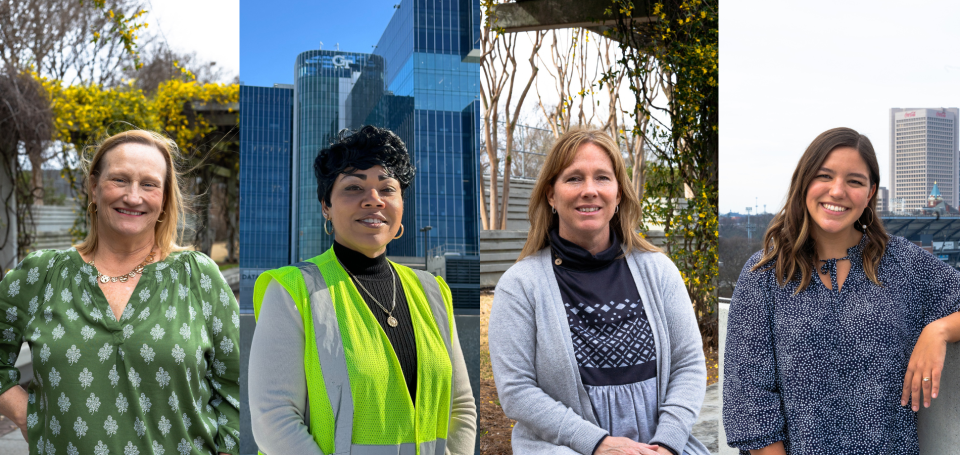
Initially known as The Safety Bill of Rights, the Occupational Safety and Health Act passed in December of 1970 as a way of assuring the health and safety of men and women working in hazardous working environments. Soon after, the Occupational Safety and Health Administration (OSHA) was founded in April of 1971. According to the Advisory Committee on Occupational Safety and Health, when OSHA was established in the 1970s “women made up less than one percent of workers in the construction trades. By 1995, that percentage had only grown to 2.3%.” As of 2021, women represented 32.5% of the approximately 78,471 Occupational Safety and Health specialists and technicians in the field (Data USA).
Included in the dramatic increase of women in the Occupational Safety and Health field were Rachel Schneider, Gwendolyn Jordan-Howard, Paige Rohrig, and Vicki Temple. Throughout their careers as safety and health professionals, these women have dedicated themselves to enhancing their knowledge and skills through continued education, either as learners or instructors with Georgia Tech Professional Education (GTPE). Each of these women joined the field at different times and for different reasons, yet all share a common commitment to making a difference and saving lives.
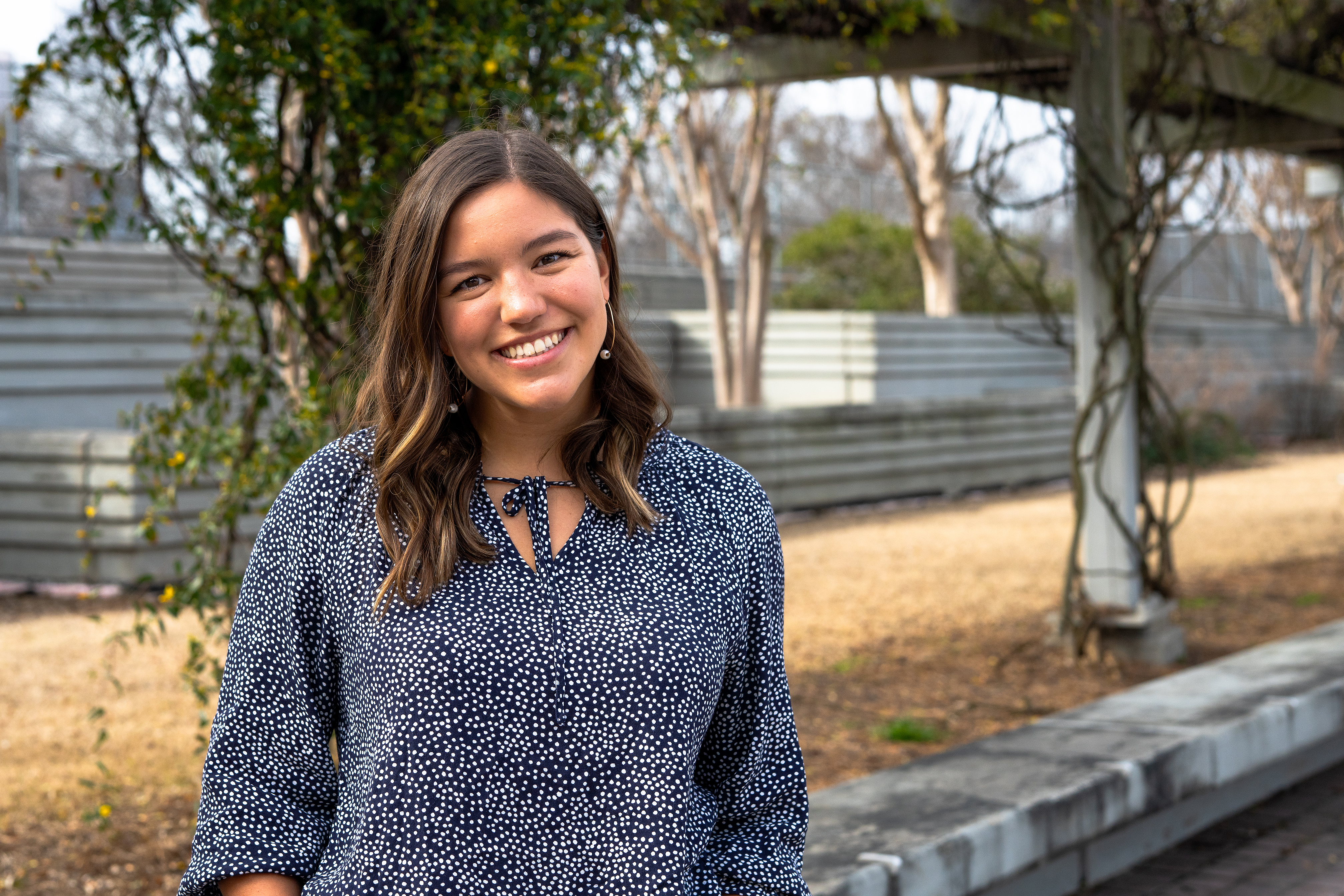
Rachel Schneider
After taking an environmental health course in college, Rachel Schneider knew she wanted a career where she could explore the relationship between different environments and the effect they may have on our health. The average person spends approximately one-third of their life at work. Because of this, Rachel saw the opportunity to “help companies ensure their work environment doesn’t negatively affect their employees’ health” she said. Rachel started her career in 2017 as an occupational safety consultant with Georgia Tech’s Safety, Health, Environmental Services. Now, her work as a consultant allows her to travel throughout the state of Georgia and make safety improvements to numerous businesses from a variety of industries including food manufacturing and healthcare.
Like most safety and health specialists, Rachel’s passion for keeping workers safe is the driving force pushing her every day. Throughout her career, she has appreciated the increased emphasis on the importance of mental health. This is valuable for all workers, but especially among those in construction where the CDC found the rate of suicide among males to be almost four times higher than the national average. While this isn’t an area she specializes in, it is a great example of the power of a healthy work environment. “Although oftentimes there is no single cause for suicide,” said Rachel, “in the occupational safety and health field, we are expanding the breadth of what defines a healthy workplace and recognizing more and more how both policies and employers can better address workplace stress, mental health, and the prevention of suicide.”
Rachel also works as an educator with the OSHA Training Institute Education Center at Georgia Tech (GT-OTIEC), one of the 26 national OTIECs in the nation. One thing she appreciates about that role is the ability to affect the safety and health of numerous workers, businesses, and industries. In her courses, Rachel often reminds her students to “dig deeper and keep asking questions" when incidents happen. This allows them to identify the underlying gaps in the overall safety and health management system.
The GT-OTIEC’s courses offered through GTPE, attract a diverse group of safety and health professionals who can leverage their backgrounds and experiences into discussions everyone present can learn from. Students are known to share the different hazard control methods they have found success in, how they have succeeded in involving their employees in safety and health, and what they have done to create a work environment where workers feel valued and safe.
By sharing their experiences, Rachel’s students aren’t the only ones learning during her courses. “It has been said that the best way to learn a topic is to teach it. I believe that is certainly true! However, not only have I learned the OSHA standards better, but I have also learned (and continue to learn) so much from the students I am teaching,” Rachel shared.
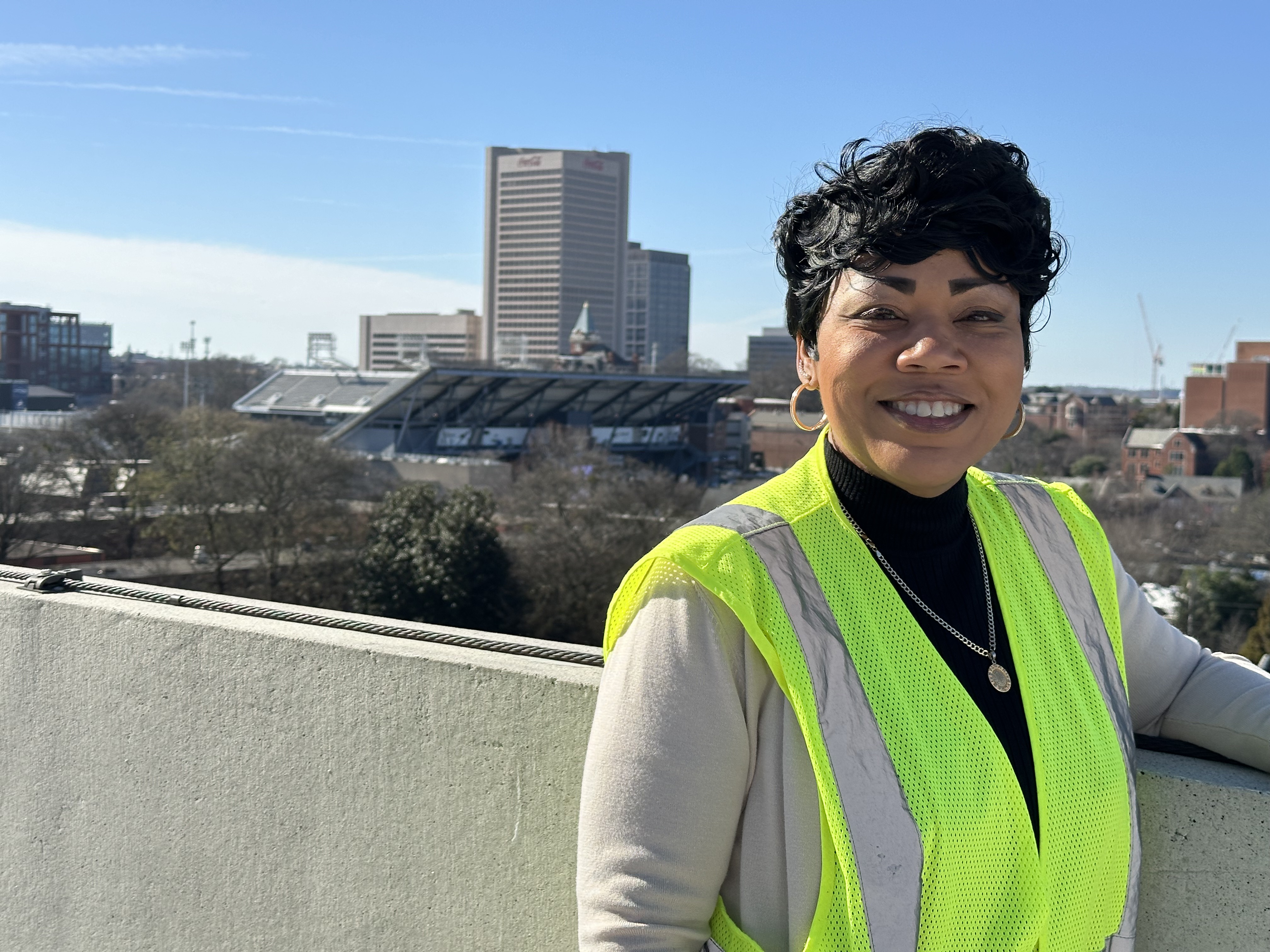
Gwendolyn Jordan-Howard
“I can honestly say I can’t see myself doing any other job.” This was Gwendolyn Jordan-Howard’s response when asked why she has spent 30 years and counting working in occupational safety and health. Gwendolyn’s first step toward her 30-year career came after a conversation with two of her cousins about wanting to change majors while an undergrad. The two women, one of whom is a Georgia Tech alumna, were working in nuclear physics and mechanical engineering and recommended Gwendolyn follow her passion for science and look into an environmental health science degree. Three years into her career, Gwendolyn followed in her cousin’s footsteps and began taking OSHA training courses at Georgia Tech.
Gwendolyn took her first course through GTPE in 1997. "I have not stopped learning from the program since," she said. "The staff such as Dr. Turner, Jenny Houlroyd, and Hilarie Warren have been pivotal in my career, my learning, and my growth as a safety professional. I will always be grateful for their guidance.”
Today, Gwendolyn is the director of Environmental Health Safety Security at Hoshizaki America. Gwendolyn firmly believes that safety and health is an essential, ever-changing part of all jobs and workplaces, as new challenges constantly arise. Her ultimate goal as an safety and health professional is to help create an environment where workers feel safe mentally and physically. While the idea of ever-changing assignments may sound draining to some, for Gwendolyn, it's the main reason she enjoys the field.
"Occupational Safety and Health is a science that involves understanding the behaviors of people and building an environment where they feel safe,” Gwendolyn said as she defined the nature of her job. A mentor once told her, occupational safety and health and environmental health science personnel play a critical role throughout the entire lifespan of an organization. As a safety and health professional, Gwendolyn begins protecting workers from the planning stage of every project, making sure safety is a priority. She continues this responsibility until the doors close, all while taking into consideration the mindset of every employee from the start to the finish of the workday.
Understanding the behaviors of humans means understanding human error and its consequences. Twelve years into her career, Gwendolyn faced the intense human emotion of watching an employee’s family suffer the sadness and realization that their loved one nearly lost his life in an incident on the job. This employee was seriously injured and had to fight mentally and physically to get back on his feet. Some might say that’s just part of the job, but for Gwendolyn, it “made me strive to always go above and beyond for safety,” she explained. Her passion for safety doesn’t end with her duties on the job, but also gives her hope that as OSHA evolves, there will be an increased focus on preventing injuries and illnesses in the workplace rather than simply reacting to them.
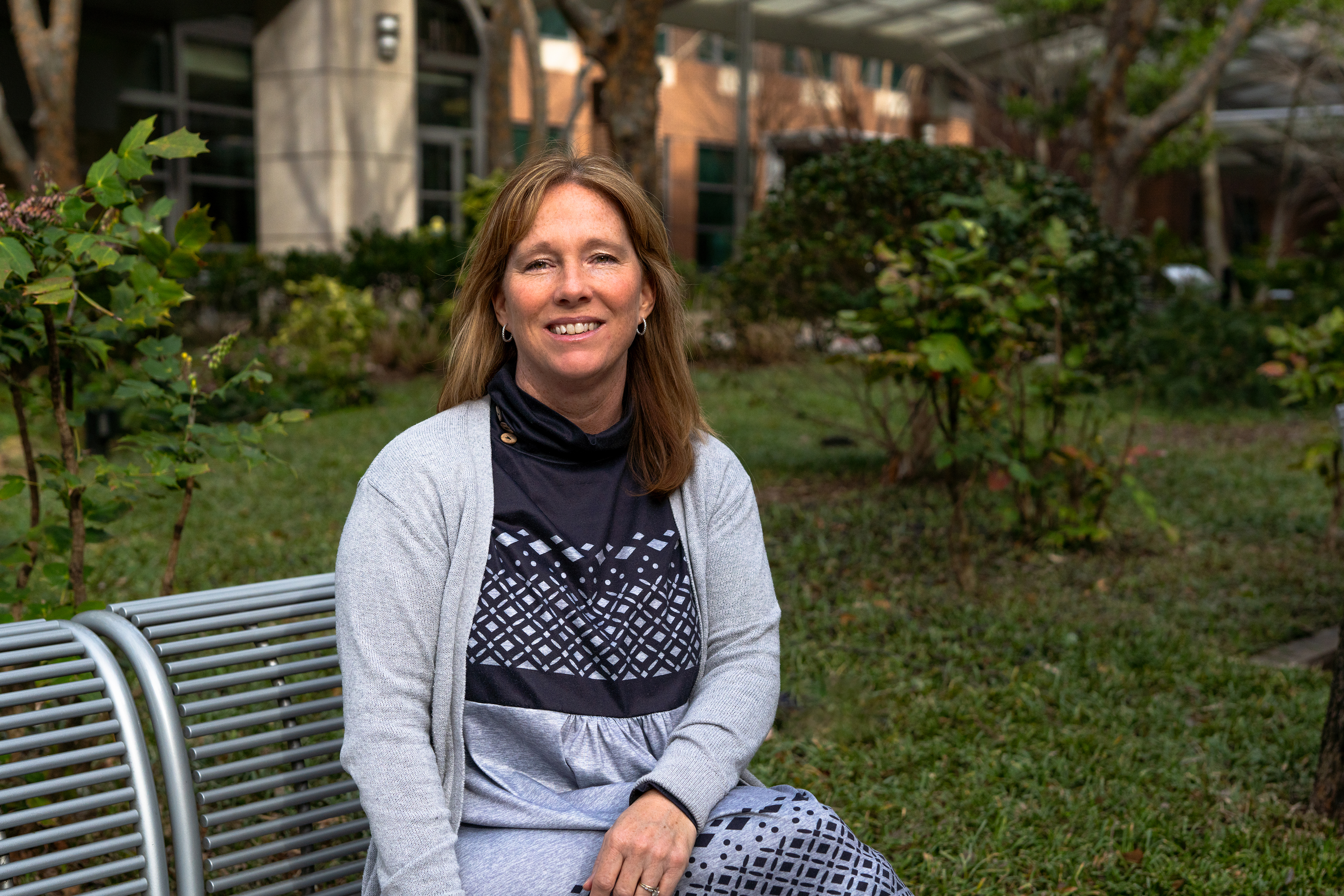
Paige Rohrig
With 23 years of experience, Paige Rohrig is a senior research scientist with Georgia Tech’s Safety, Health, Environmental Services. Through on-site consultations, she works with employers and employees in a wide range of industries throughout Georgia, providing them with safety and health insights and guidance. When starting her career, Paige’s learning strategy was to learn from the top down. “I had more senior personnel teach me the basics of safety and to think beyond the regulations,” she said. One of the most important things Paige learned from her superiors is “if it looks unsafe, it is,” which opened her eyes to a broader range of safety-related hazards and solutions.
Paige is also a senior research scientist with GT-OTIEC, a natural progression of her job. Being an educator with GT-OTIEC allows Paige to network with safety professionals she may not have come in contact with otherwise. “I love meeting other safety professionals and hearing what they are dealing with day-to-day. I like the networking aspect and learning new ideas and solutions in safety and health,” she said. The networking in these courses isn’t just between Paige and her students though. Students are networking with each other and, in turn, learning from each other. As an instructor, Paige hopes each student leaves her courses having learned at least one new thing and advises her learners to “talk to the other students in the class and try to gain as many resources and knowledge as you can.”
The depth of Paige's passion for education extends well beyond the classroom. Hilarie Warren, director of GT-OTIEC shared how, over the 18 years they have worked together, she has regularly witnessed Paige's willingness to help and her trained eye for safety solutions. Hilarie shared how impactful she found Paige's willingness to express uncertainty in moments where correct information was paramount.
"Years ago, I shadowed Paige on a site visit. I remember her responding to a question with 'I don’t know, but I will get back to you after I check a source.' To my recollection, it might have been the first time I’d heard a female colleague admit uncertainty – but it was powerful to me as a young safety and health professional. It demonstrated the importance of being honest and transparent, and then following through to provide the most accurate and thorough answer possible – which of course she did. With a couple of extra resources thrown in for good measure."
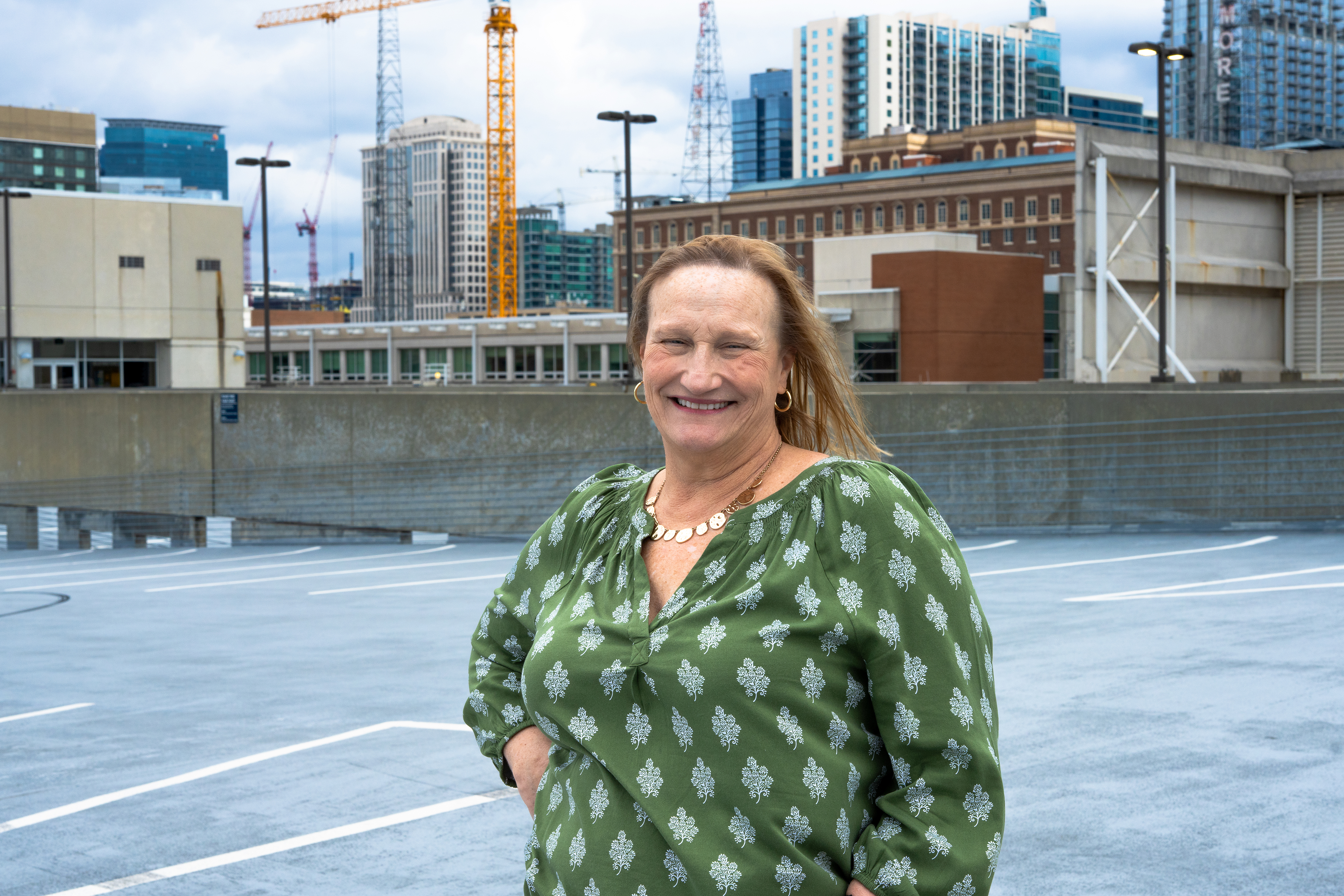
Vicki Temple
Vicki Temple, safety director with Civil Cites Services Inc. has 15 years of experience in the occupational safety and health field, but her journey with safety and health is lifelong. When Vicki was a young girl, her father was working as a contractor and was injured in a confined space accident, suffering burns across his body. Due to the severity of his injury, Vicki was unable to hug her father for months following the incident. This tragic accident inspired Vicki’s interest in safety and ultimately led her to a career in safety and health. “I want to do everything I can to prevent injuries and accidents. I enjoy meeting and training people from all walks of life and love knowing that proper training can make the difference in keeping workers safe,” she said.
At the beginning of her career, the field heavily focused on the Progressive Discipline process, a system where workers were written up for their mistakes. Vicki explained, “there was a good chance workers could be terminated based upon the accident." In more recent years, the field has shifted to a proactive approach called the Behavior-Based Safety method - a technique focused on identifying and changing the factors that influence unsafe behaviors and using positive reinforcement to encourage safe behaviors.
“I remember when workers were scared to report near misses for fear of being punished, and now, we’re getting to a point where workers understand that those are learning opportunities that need to be shared. Blame rarely leads to improvement, but learning to do things correctly can” Vicki said.
When asked what the best advice she’s received from a mentor has been Vicki shared, “listen first and let them know you care.” Like most of us, Vicki occasionally finds herself in a situation where the solution feels obvious, but through her years of experience, she has learned the importance of different perspectives when searching for solutions. One of those important perspectives is that of OSHA. “OSHA is our partner… not someone to be afraid of on the job site. They exist to keep workers safe” she explained.
Nine years ago, Vicki made the conscious decision - heavily influenced by her continued passion for safety and health training - to return to the workforce after a break to focus on caring for her children. “Each person needs to know that they are important, their decisions matter, and they have ownership in keeping others safe,” Vicki said. As she continues to move forward in her career, Vicki hopes the field will continue its increased scrutiny of the safety processes and systems and the ‘how’ that leads to accidents and injuries so that professionals like herself can learn and improve the systems they use every day to keep workers safe.
Advice for pursuing a career in Occupational Safety and Health
Rachel Schneider: Don’t let unfamiliarity with the standards keep you from pursuing a career in this field. I truly believe that a strong desire to ensure workers are protected and healthy is enough for someone to have a successful career.
Gwendolyn Jordan-Howard: Occupational safety and health is a job that challenges your mind, body, and soul to be better, continue to learn, and evolve as the industry and the world change.
Paige Rohrig: This is a great field and you can truly make a difference. I believe working in the safety field does help prevent injuries, illnesses, and fatalities every day.
Vicki Temple: Find a good mentor and be a sponge. Be open to new ideas and always be ready to have your beliefs challenged….never stop learning or listening.

